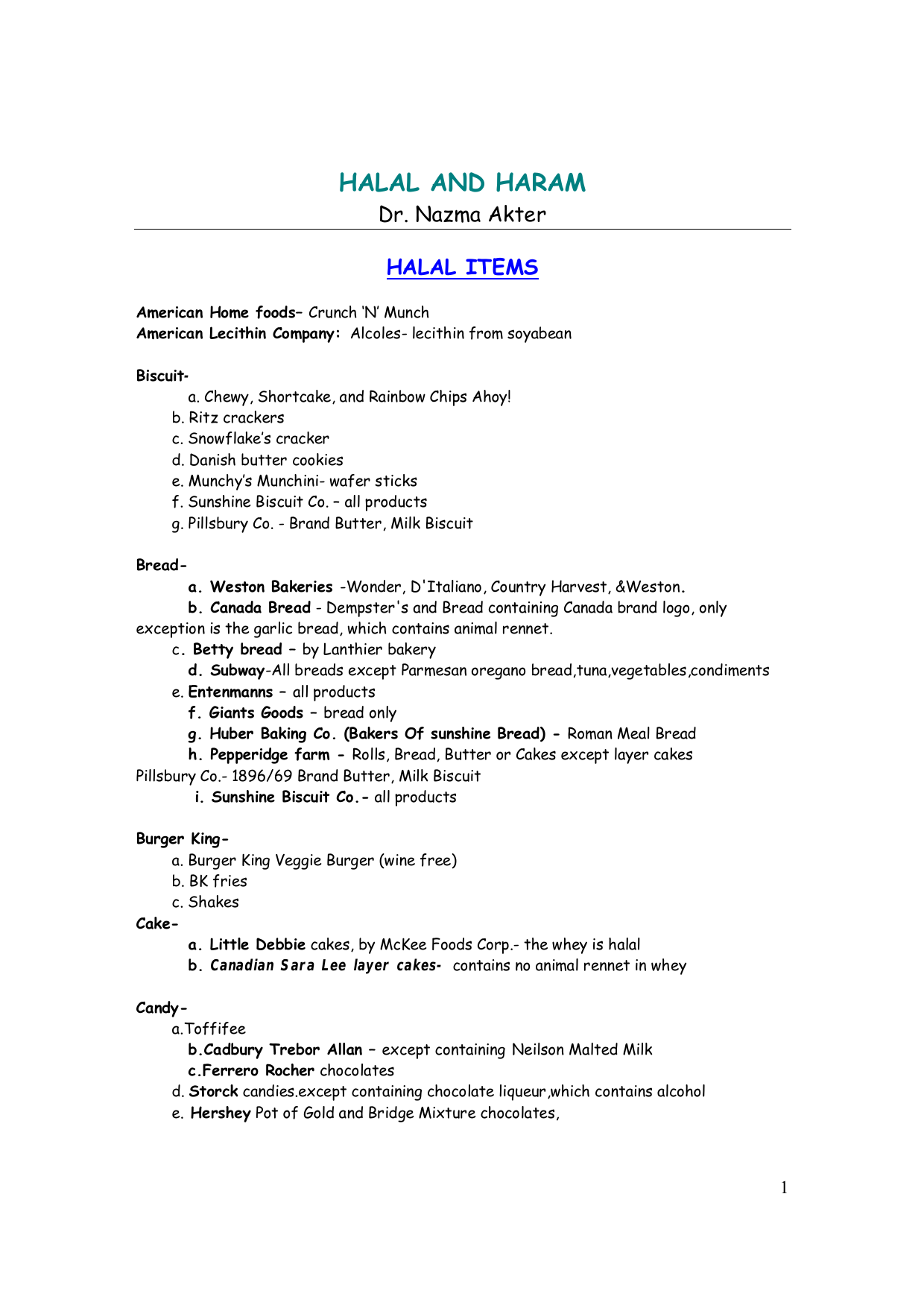Halal Haram List Of Ingredients That Contain

Most Muslims know to look out for pork, alcohol, and gelatin on ingredient labels. But can we eat products that contain ergocalciferol or glycerol stearate? To help with your halal eating and drinking, check ingredient lists. Sep 14, 2017 - Here's the list of the top 7 most disgusting haram ingredients. And cosmetics containing cochineal must declare it on the product's ingredients list. How can you figure out if the product you're purchasing is, in fact, halal?
The Islamic Council of Victoria (ICV) is the peak Muslim body representing an estimated 200,000 Victoria Muslims and over 60 member societies. ICV offer advocacy and social welfare services while leading state and national initiatives on cohesion and harmony through community consultations and advice to Government. It has experience in building meaningful engagements, partnerships and projects with over 70 organisations (Muslim and non-Muslim) including over 20 Multifaith and Multicultural groups. Donations To make donations to the masjid or ICV initiatives. May Allah reward you.
Mace (Halal) A spice derived from the aril of nutmeg. Mace is often preferred in light dishes for the bright orange, saffron-like hue it imparts. Magnesium Carbonate (Halal) Magnesium carbonate, MgCO3 (archaic name magnesia alba), is an inorganic salt that is a white solid.
Magnesium carbonate is ordinarily obtained by mining the mineral magnesite. Magnesium carbonate can be prepared in laboratory by reaction between any soluble magnesium salt and sodium bicarbonate. Because of its water-insoluble, hygroscopic properties MgCO3 was first added to salt in 1911 to make the salt flow more freely. As a food additive magnesium carbonate is known as E504. Magnesium Stearate (Doubtful) Magnesium stearate is a chemical compound, white, water-insoluble powder.
It is used as a release agent and as a component or lubricant in the production of pharmaceuticals and cosmetics. It is used in preventing ingredients from sticking to manufacturing equipment during the compression of chemical powders into solid tablets; magnesium stearate is the most commonly used lubricant for tablets.
Magnesium stearate can be sourced from both animal and vegetable (eg. Soy) sources. Since it is used in manufacturing of medications, please consult with a scholar regarding your medical situation if you know that the medicine you have contains animal derived magnesium stearate.
Some scholars agree that the medicines with animal derived ingredients maybe permissible when the medicine is known to be effective and there is no other alternative, just as there is a dispensation in drinking alcohol for a person dying of thirst. Maize (Halal) Maize, also known as corn, is a large grain plant. Malt (Halal) Malt is germinated cereal grains that have been dried in a process known as “malting”. The grains (most commonly barley) are made to germinate by soaking in water, and are then halted from germinating further by drying with hot air. Malting grains develops the enzymes required for modifying the grain’s starches into various types of sugar. Malted grain is used to make malted shakes, malt vinegar, confections such as Maltesers and Whoppers, flavored drinks such as Horlicks, Ovaltine, and Milo, and some baked goods, such as malt loaf, bagels, and rich tea biscuits.
Maltitol (Halal) Maltitol is a sugar alcohol (a polyol) used as a sugar substitute. Johnson matthey gold bar value. It has 75–90% of the sweetness of sucrose (table sugar) and nearly identical properties, except for browning. It is used to replace table sugar because it is half as caloric, does not promote tooth decay, and has a somewhat lesser effect on blood glucose. Contrary to what the name may suggest, a sugar alcohol is neither a sugar nor an alcoholic beverage. They are white, water-soluble solids that can occur naturally or be produced industrially from sugars. Maltodextrin (Halal) Maltodextrin is a polysaccharide that is used as a food additive. It is derived from starch by partial hydrolysis and is usually found as a white hygroscopic spray-dried powder.